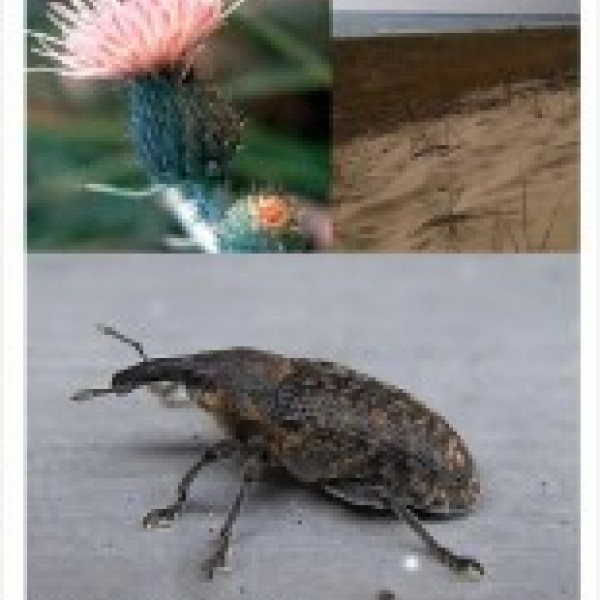
Interactions between a Suite of Biocontrol Weevils and the Ecosystem of Cirsium pitcheri 2014
Lab work at the Chicago Botanic Garden; Field work at two sites in Door County, Wisconsin
Ecology, Population Biology, Reproductive Biology
This project focuses on interactions between a suite of biocontrol weevils and the threatened plant, Cirsium pitcheri, and carries implications for management and biocontrol usage in the United States. Work will be split between a lab at the Chicago Botanic Garden and field sites in Door County, Wisconsin. The weevils have been used to control Cirsium, Carduus, and Centaurea species in North America. We will be testing the degree to which Larinus planus and Rhinocyllus conicus use Centaurea stoebe ssp. micranthos as a host plant. We will also be testing the capability of L. minutus and L. obtusus to use C. pitcheri as a host plant. These host plant experiments will utilize choice and non-choice tests and look at frequency of oviposition and feeding. These tests will occur in a growth chamber at the Chicago Botanic Garden. An additional sub-project is that of testing two weevil control methods with the intention of avoiding pollinator mortality. These two methods are trap-cropping, which entails using Cirsium arvense to surround an area of C. pitcheri in an effort to draw the weevils away. This is following methods used in agriculture and would occur at the Chicago Botanic Garden. The other method is that of an oviposition barrier called tanglefoot. This is a sticky substance that is applied to the phyllaries of the flowering head. The heads with tanglefoot will be monitored for pollinator bycatch. We will also be determining the overwintering ecology of L. planus in this system. Preliminary data conflicts with the reported literature for this species. A final aspect of these interactions comes from the analysis of the pollination network in the area around the C. pitcheri populations. Field observations indicate that C. pitcheri is the primary source of nutrients for pollinators when it typically blooms. We will combine pollinator and plant observations to determine if this is the case. If true, management of weevils may be difficult due to disturbance of the local pollinators main food source. Through participation in the project, the undergraduate would learn methods involved in pollination biology, plant identification, insect identification, biological control testing, and growth chamber experiments. These methods provide a good scientific background for furthering a career in the fields of ecology, entomology, or plant science.
